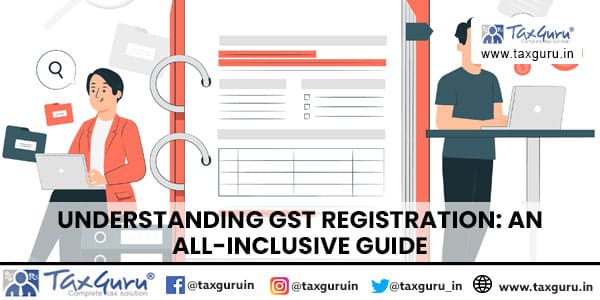| Why is GST Necessary |
- GDP growth could go up by 1%. We are already at 8.5% and probably with GST we would cross double digit, the Only Country in the World.
- International Competitiveness by about 5%.
- Increased in FDI. Just by the announcement of GST or the Possibility of GST has made India a favorable destination
- Removal for Barriers for Trade and Commerce in India. For example Removal of Check Posts and the Unnecessary Expenditure Incurred on tax planning of setting Up of Depots in Different States would certainly go down.
- Substantial Lowering of the Transaction Cost and Reduced Corruption.
|
| How is Model GST Law Drafted |
Revised GST Model Law has borrowed from the following Laws not only the Principles but also has Expanded the Various Definitions in the Respective laws:
- CST/VAT: Definition of Business, Market Value of WCT, Agent, Aggregate turnover, Discount Etc.
- Central Excise: Concept of Supply has arisen as the Central Excise considers the Point of Removal as the Taxable Event. Also Concepts of Place of Business, Job Work, and Provision of Assessment have been taken from Central Excise, Custom and to some Extent from Service Tax.
- Customs: Definition of the Related Persons and the Concept of Valuation of the Similar Goods have been borrowed from the Customs.
- Service Tax: Concepts related to Consideration, Reimbursable Expenses, Place of Place of Service i.e. POPS rules are almost same in the Model GST Law
- CCR: Cenvat Credit Rules ensures that there is No Cascading Effect or Limited Cascading effect and Encompasses the Credit of Capital Goods, Inputs and Input Service. The same is coming in the Model GST Law.
- Foreign Trade Policy(FTP): It is Important Aspect of the Indian Law and Provides Exporters with Certain benefits
|
| Some Features of the Draft Model Law |
- Single Tax on Supply Instead of Manufacture(CED+Entry Tax), Trading (CST/VAT) and Services(Service Tax, Luxury Tax, Betting, Entertainment Tax etc)
- GST is a Destination based Consumption Tax as Against VAT and Central Excise which are Origin based Taxation system although Service Tax is Destination based.
- There would be Multi Point levy with full credit at Each Stage similar to Present System of VAT and thus each Assessee will have to pay small % of Tax.
- Stock Transfers are held liable to GST whether within the same state or outside the state. In case of Interstate Stock Transfers IGST would be levied and in case of Intrastate CGST/SGST would be levied. In the Present system Stock Transfers are not held liable to VAT at all and there is Exemption, Compliance is ensured through Form-F.
- Non Inclusions under the GST model Law: Major Fuels, Liquor, Purchase Tax, Stamp Duty, Vehicle Tax and Electricity duty
|
| Principles of GST
|
- Scope of Supply, Levy and Collection
- Value of Supply of Goods and Services
- Input Tax Credit and Set Off
- Other Procedures ( Registration, Payment, Return and Refund)
|
| Input Tax Credit Under GST |
Tax To be Paid:- Tax can be Adjusted Against
1) SGST:- SGST and IGST in that Order
2) CGST:- CGST and IGST in that Order
3) IGST:- IGST, CGST and SGST in that Order |
| Impact on Service Sector |
- Tax Rate will Increase compared to Present rate of 15%.
- All Continuing/Ongoing Contracts have to suffer increased rate in respect of the contracts completed after the Effective date.
- Some Exemptions may be withdrawn as Govt is looking for a Wider Tax Base.
- Presently a Service Provider can opt for Centralized Registration even if he has branches across the Country and is required to file only 2 returns in a Year for all the Branches taken together. Under GST a Service Provider has to take separate registration for each branch in different state.
- Service Provider shall be eligible for the Credit of VAT portion on his purchases which was earlier not available.
- Service Provider can opt for Composition Scheme and Pay Tax @ 1% if the Aggregate turnover is up to 50 lakhs subject to certain Conditions
- Free Service would become Taxable
|
| Impact on Manufacturer |
- SSI Exemption may be Reduced up to 10 lakhs instead of 1.5 crore at Present
- Manufacturer shall be Eligible for VAT Credit for which he was Earlier not Eligible
- Exemptions will be Minimum
- Area Based Exemptions shall not be available under GST Law.
- Faster movement of goods due to the Elimination of Check Posts and Entry Barriers.
- No Retention/Disallowance of Credit on the Stock Transfers
- Reduction in Exemption, Confusion would lead to less Tax Evasion and thus Less Corruption.
|
| Impact on Traders |
- Traders can now avail the Credit of Service Tax and Excise duty Paid.
- Credit of Import Duty will make the Imports Cheaper for the Retailers
- Traders will have to register with Central Govt for the Payment of CGST/IGST.
- No Requirement of F-Form in case of stock transfers as such Transfers are liable to Tax under the GST law.
- Exemption under GST would be up to Rs 10 lakhs. At Present the average Exemption across all the states is Rs 5 lakhs.
- Retailers can avail Composition Scheme and Pay Tax @ 1% if the Aggregate turnover is up to 50 lakhs subject to certain Conditions.
- Form- C are Abolished under GST model law.
|




















